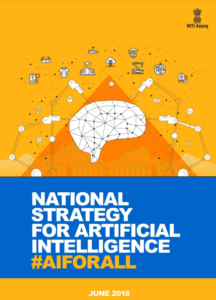Microsoft Azure AI 900 Certification Notes
1. Introduction to AI
Definition of AI
- Artificial Intelligence (AI): The simulation of human intelligence processes by machines, especially computer systems. These processes include learning, reasoning, and self-correction.
AI Types
- Narrow AI (Weak AI): Designed to perform a narrow task (e.g., facial recognition or internet searches). It operates under a limited pre-defined range of functions.
- General AI (Strong AI): Hypothetical AI that can perform any intellectual task that a human being can do. It has not yet been achieved.
- Superintelligent AI: An AI that surpasses human intelligence across all fields, including scientific creativity, general wisdom, and social skills.
2. Fundamental Concepts of Machine Learning
Machine Learning (ML)
- Machine Learning: A subset of AI that enables systems to learn and improve from experience without being explicitly programmed. ML focuses on the development of algorithms that can process data and make predictions or decisions.
Types of ML
- Supervised Learning: The algorithm is trained on labeled data. Each training example is paired with an output label.
- Examples: Classification (e.g., spam detection), Regression (e.g., predicting house prices).
- Unsupervised Learning: The algorithm is given data without explicit instructions on what to do with it. It must find structure within the data.
- Examples: Clustering (e.g., customer segmentation), Association (e.g., market basket analysis).
- Reinforcement Learning: The algorithm learns by interacting with its environment. It receives rewards or penalties based on its actions and aims to maximize cumulative reward.
- Examples: Game playing (e.g., AlphaGo), Robotics.
Common Algorithms
- Linear Regression: Predicts a continuous outcome based on the linear relationship between input features.
- Logistic Regression: Used for binary classification problems.
- Decision Trees: A tree-like model used for both classification and regression tasks.
- K-Means Clustering: An unsupervised algorithm that groups similar data points into clusters.
- Neural Networks: A series of algorithms that mimic the operations of a human brain to recognize patterns.
3. Core Azure AI Services
Azure Machine Learning
- Azure Machine Learning: An enterprise-grade service for the end-to-end machine learning lifecycle, including data preparation, model training, deployment, and management.
- Features: Automated ML, drag-and-drop designer, Jupyter notebooks, integrated with Azure DevOps.
Azure Cognitive Services
- Azure Cognitive Services: A collection of APIs for adding AI capabilities to applications. It includes:
- Vision:
- Computer Vision: Extracts information from images.
- Use Cases: Image tagging, OCR, object detection.
- Face API: Detects and recognizes human faces.
- Use Cases: Facial recognition for security systems.
- Form Recognizer: Extracts text, key-value pairs, and tables from documents.
- Use Cases: Automating form processing.
- Computer Vision: Extracts information from images.
- Speech:
- Speech-to-Text: Converts spoken language into text.
- Use Cases: Transcription services.
- Text-to-Speech: Converts text into spoken voice.
- Use Cases: Voice assistants.
- Speech Translation: Translates spoken language in real-time.
- Use Cases: Multilingual communication tools.
- Speech-to-Text: Converts spoken language into text.
- Language:
- Text Analytics: Extracts insights such as sentiment, key phrases, and named entities from text.
- Use Cases: Sentiment analysis for customer feedback.
- Translator: Translates text in real-time across multiple languages.
- Use Cases: Multilingual websites and applications.
- Language Understanding (LUIS): Builds natural language understanding into apps.
- Use Cases: Chatbots and virtual assistants.
- QnA Maker: Creates a conversational question-and-answer layer over your data.
- Use Cases: FAQs and customer support bots.
- Text Analytics: Extracts insights such as sentiment, key phrases, and named entities from text.
- Decision:
- Personalizer: Delivers personalized user experiences.
- Use Cases: Recommendations in e-commerce.
- Anomaly Detector: Identifies anomalies in time-series data.
- Use Cases: Fraud detection.
- Content Moderator: Automated content moderation for images, text, and video.
- Use Cases: Social media moderation.
- Personalizer: Delivers personalized user experiences.
- Vision:
4. ML Workflow in Azure
Data Preparation
- Collect Data: Gather data relevant to the problem.
- Clean Data: Handle missing values, remove duplicates, and correct errors.
- Preprocess Data: Normalize/standardize data, encode categorical variables.
Model Training
- Select Model: Choose the appropriate machine learning algorithm.
- Train Model: Use training data to teach the model.
- Evaluate Model: Assess model performance using metrics like accuracy, precision, recall, F1 score.
Model Evaluation
- Validation Techniques: Use techniques such as cross-validation to ensure the model generalizes well to new data.
- Confusion Matrix: Visual representation of the performance of a classification algorithm.
Model Deployment
- Deploy Model: Make the model available for use in a production environment.
- Endpoints: Create REST endpoints for real-time predictions.
Model Management
- Monitor Model: Track the performance and ensure it continues to perform well.
- Retrain Model: Update the model with new data to improve its accuracy.
5. Data Science and ML Principles
Feature Engineering
- Feature Selection: Choosing the most relevant features for model training.
- Feature Transformation: Converting raw data into suitable formats for machine learning (e.g., scaling, encoding).
Model Validation
- Cross-Validation: Dividing data into subsets to ensure the model performs well on unseen data.
- Train/Test Split: Splitting data into training and testing sets.
Hyperparameter Tuning
- Grid Search: Exhaustive search over specified parameter values.
- Random Search: Randomly samples parameter values to find the best combination.
6. Responsible AI
Fairness
- Bias Detection: Techniques to detect and mitigate bias in AI models.
- Equality: Ensuring models provide fair outcomes for all groups.
Explainability
- Model Interpretability: Making AI decisions understandable to humans.
- Techniques: SHAP (SHapley Additive exPlanations), LIME (Local Interpretable Model-agnostic Explanations).
Privacy and Security
- Data Protection: Ensuring user data is secure and used responsibly.
- Compliance: Adhering to regulations like GDPR.
Accountability
- Transparency: Providing clear information about how AI models make decisions.
- Governance: Establishing policies and procedures for responsible AI use.
7. Azure Cognitive Services
Computer Vision
- Capabilities: Image analysis, OCR, object detection.
- APIs: Provide endpoints for integrating vision capabilities into applications.
Speech Services
- Capabilities: Converting speech to text and vice versa, speech translation.
- APIs: Enable adding speech recognition and synthesis to applications.
Language Services
- Capabilities: Text analytics, language understanding, translation.
- APIs: Provide natural language processing capabilities.
Decision Services
- Capabilities: Personalized recommendations, anomaly detection.
- APIs: Facilitate decision-making processes in applications.
8. Azure Bot Services
Bot Framework
- Components: SDKs, tools, and services for building bots.
- Capabilities: Create conversational experiences across multiple channels.
Bot Channels
- Integration: Connect bots to various communication channels (e.g., Microsoft Teams, Slack, Facebook Messenger).
9. Key Concepts and Terminology
Artificial Neural Networks (ANN)
- Structure: Composed of layers of interconnected nodes (neurons).
- Function: Mimic human brain operations to recognize patterns.
Natural Language Processing (NLP)
- Techniques: Tokenization, stemming, lemmatization, named entity recognition.
- Applications: Text analysis, language translation, sentiment analysis.
Computer Vision
- Techniques: Image classification, object detection, image segmentation.
- Applications: Autonomous vehicles, medical imaging, surveillance.
Deep Learning
- Characteristics: Uses deep neural networks with many layers.
- Applications: Image and speech recognition, natural language processing.
10. Exam Preparation Tips
Understand the Exam Objectives
- Review the Exam Guide: Ensure you cover all topics listed in the official Microsoft AI-900 exam guide.
Hands-on Practice
- Azure Portal: Use the Azure portal to practice deploying and managing AI solutions.
- Tutorials and Labs: Follow tutorials and labs available on Microsoft Learn and other platforms.
Use Learning Resources
- Microsoft Learn: Free online learning paths and modules.
- Online Courses: Courses on platforms like Coursera, Udemy, and edX.
- Practice Exams: Take practice tests to assess your knowledge and identify areas for improvement.
Stay Updated
- AI Technologies: Keep up with the latest trends and developments in AI.
- Azure Services: Stay informed about updates and new features in Azure AI services.
This comprehensive guide should help you prepare thoroughly for the AI-900 certification exam. Make sure to delve deeper into each topic, practice with real-world scenarios, and test your knowledge regularly. Good luck!


